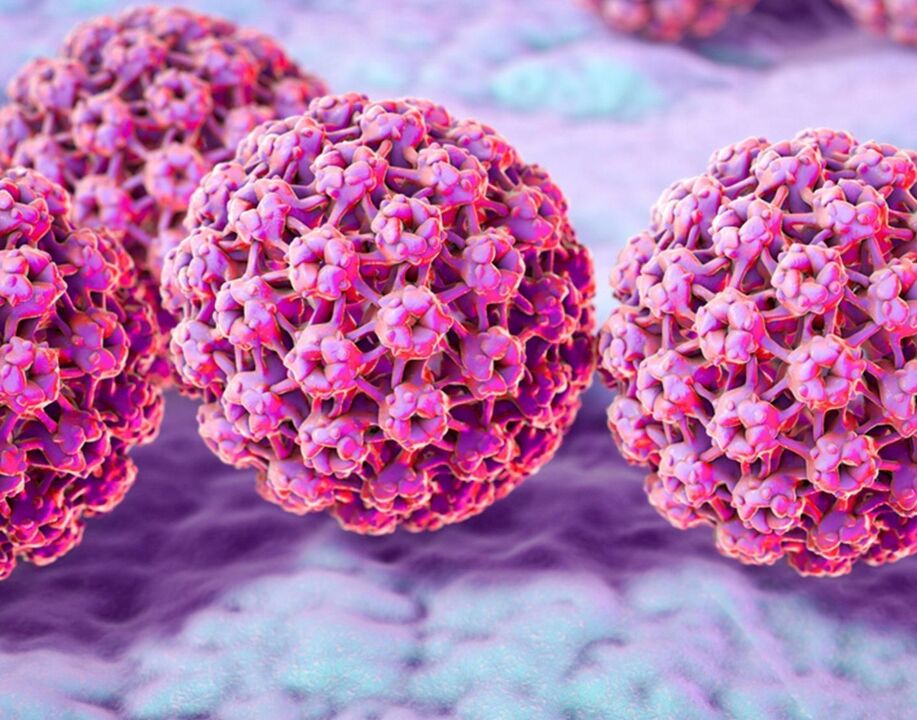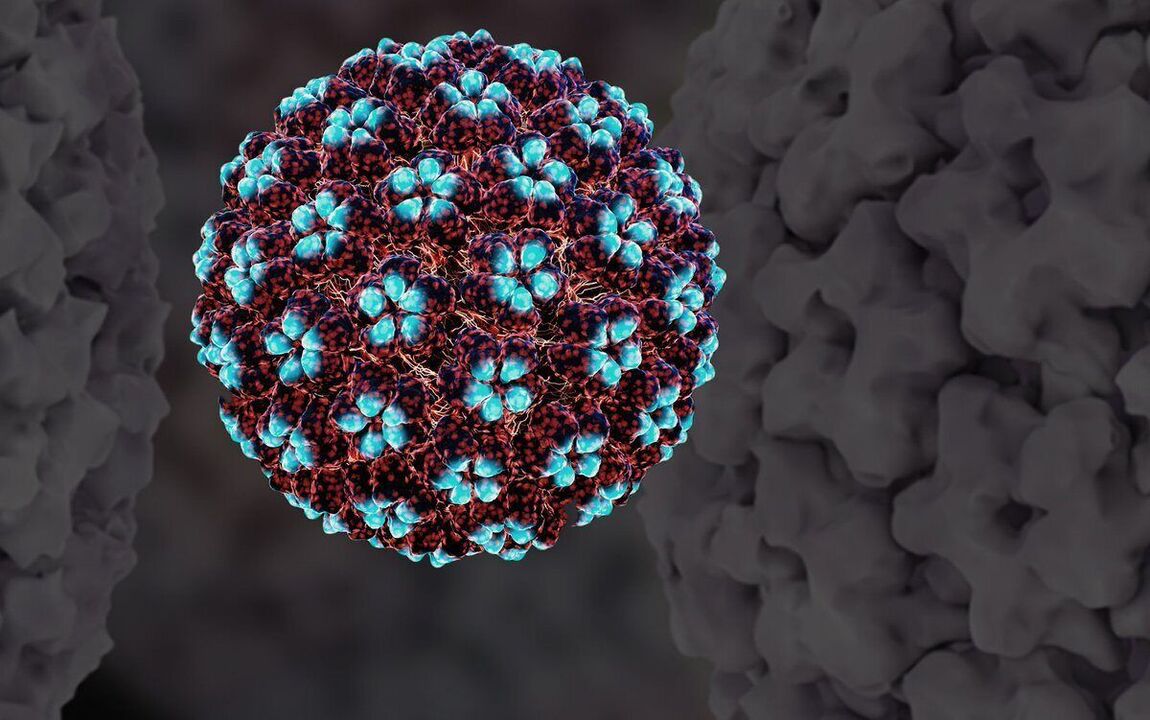Human papillomavirus (HPV) is an extremely common sexually transmitted infection worldwide.
The peculiarity of this infection is that it does not occur for many years, but can eventually lead to the development of benign (papilloma) or malignant (cervical cancer) diseases of the genitals.

Types of human papillomavirus
More than 100 types of HPV are known. Types are specific "subspecies" of viruses that are different. Types are denoted by the numbers assigned to them when they are discovered.
The high oncogenic risk group consists of 14 types: 16, 18, 31, 33, 35, 39, 45, 51, 52, 56, 58, 59, 66, 68 (these types are associated with the development of cervical cancer).
In addition, types with low oncogenic risk are known (mainly 6 and 11). They lead to the development of anogenital warts (genital warts, papillomas). Papillomas are found on the mucous membranes of the vulva, the vagina, the perianal region, and the skin of the genitals. They almost never become malignant, but lead to significant cosmetic defects in the genitals. Warts on other parts of the body (hands, feet, face) can be caused by these types of viruses or of other origins. The following articles discuss the "high-risk" and "low-risk" types of HPV separately.
Human papillomavirus infection
The virus is spread primarily through sexual contact. Almost all women become infected with HPV sooner or later: up to 90% of sexually active women experience this infection in their lifetime.
But there is good news: the majority of those infected (about 90%) get rid of HPV within two years without medical intervention.
This is the normal course of the infectious process caused by HPV in the human body. This time is enough for the human immune system to get rid of the virus completely. In this situation, HPV does not cause any harm to the body.That is, if HPV was detected in the past and is not, it is completely normal!
It should be borne in mind that the immune system works at "different rates" in different people. In this regard, the rate of HPV release may be different for sexual partners. Therefore, there may be a situation where HPV is detected in one partner but not in the other.

Most people become infected with HPV shortly after they become sexually active, and many never know they are infected with HPV. Prolonged immunity does not develop after infection, so it is possible to re-infect with the same virus we have encountered and with other types of viruses.
"High-risk" HPV is dangerous because it can lead to cervical and other cancers. "High-risk" HPV does not cause other problems.
HPV does not cause inflammation of the vaginal / cervical mucosa and does not cause menstrual irregularities or infertility.
HPV does not affect the ability to conceive and conceive.
An "high-risk" HPV baby does not spread during pregnancy and childbirth.
Diagnosis of human papillomavirus
It is virtually pointless to test for HPV before the age of 25 because of the high risk of oncogenesis (except for women who start having sex early (before the age of 18)), as they are more likely to be exposed to a virus that will soon leave. test.
After 25-30 years it is worth performing an analysis:
- together with cytological analysis (PAP test). If there are changes in the PAP test and HPV is "high risk, " this situation requires special attention;
- the long-term persistence of "high-risk" HPV in the absence of cytological changes deserves attention. It has recently been shown that the sensitivity of the HPV test in the prevention of cervical cancer is higher than the sensitivity of cytology, so the determination of HPV alone (without cytology) was allowed as a stand-alone test for the prevention of cervical cancer. in the United States. In Hungary, however, an annual cytological examination is recommended, so the combination of these two examinations seems reasonable;
- after treatment of dysplasia / precancer / cervical cancer (lack of HPV in the post-treatment analysis almost always indicates successful treatment).
The test requires the taking of a smear from the cervix (it is possible to test the material from the vagina, however, it is recommended to extract the material from the cervix as part of the screening).
The analysis must be provided:
- once a year (if "high risk" HPV has previously been detected and the analysis is provided with a cytological examination);
- 1 time in 5 years if the previous analysis was negative.
Analysis of low oncogenic risk HPV is almost never required. In the absence of papillomas, this analysis makes no sense in principle (it is possible to carry the virus, the virus cannot be treated, so it is not known what to do with the result of the analysis).
If you have papillomas:
- most commonly caused by HPV;
- should be deleted whether or not we find type 6/11;
- if a smear is taken, it is directly from the papillomas and not from the vagina / cervix.
There are tests to detect different types of HPV. If you have regular HPV testing, make sure which types are included in the analysis. Some laboratories only research types 16 and 18, others - all types together. It is also possible to perform a test that identifies all 14 types of "high-risk" virus in a quantitative format. Quantitative characteristics are important in predicting the likelihood of developing cancer and cervical cancer. These tests should be used in conjunction with cervical cancer prevention rather than as a stand-alone test. In most cases, HPV analysis without cytological results (PAP test) does not allow conclusions to be drawn about the patient's health status.
There is no such analysis that would determine whether or not a virus "goes away" in a particular patient.

Human papillomavirus treatment
There is no medical treatment for HPV. There are treatments to treat conditions caused by HPV (papillomas, dysplasia, cancer prevention, cervical cancer).
This treatment should be performed using surgical methods (cryocoagulation, laser, radio knife).
None of the "immunostimulants" are related to the treatment of HPV, therefore they cannot be used. None of the drugs widely known in Hungary have undergone appropriate tests that have shown their effectiveness and safety. None of the protocols / standards / recommendations contain these drugs.
The presence or absence of "erosion" of the cervix does not affect the tactics of HPV treatment. "Erosion or non-erosion? "for more information on situations where erosion management is required.
If the patient has no complaints and there are no papillomas / lesions in the cervix during colposcopy and based on the PAP test, no medical intervention is required.
It is necessary to repeat the analysis once a year and check the condition of the cervix (annual PAP test, colposcopy). In most patients, the virus "leaves" the body on its own. If it doesn’t go away, it doesn’t need to lead to cervical cancer at all, but control is needed.
Treatment of sexual partners is not required (unless both partners have genital papillomas).
Prevention of human papillomavirus infection
Vaccines have been developed to protect against HPV types 16 and 18 (one of the vaccines also protects against types 6 and 11). HPV types 16 and 18 are responsible for 70% of cervical cancer cases, which is why protection against them is so important. Routine vaccination is used in 45 countries around the world.
Condoms (does not provide 100% protection).
The only method that provides 100% protection is to abstain from sexual intercourse. By no means am I campaigning for it, I'm just giving it some thought.














































































